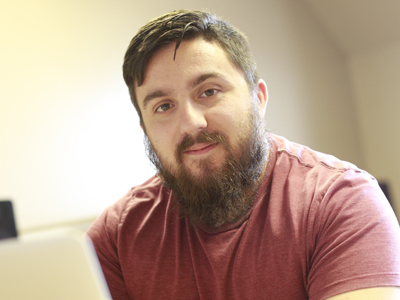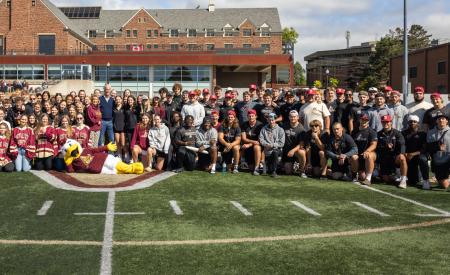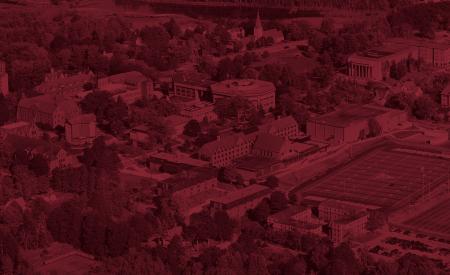5Q with environmental studies major Joe Gothreau
 1- You already have a degree in English and philosophy, why did you decide to come to Mount Allison to study environmental studies?
1- You already have a degree in English and philosophy, why did you decide to come to Mount Allison to study environmental studies?
One of the things I like about Mount Allison, and one of the reasons I returned, was the size and the ratio of students to professors. I really wanted to be more involved during this degree. I thought the opportunities would be better with the smaller class sizes and a smaller student population to do work with professors. One of the differences between being in a class of 400 people rather than a class of 30 or 40 is it is easier to get these sorts of opportunities. It was a philosophy environmental ethics class I took during my last year of my BA that really got me interested in the environment and what was going on. My interest and reasons for coming back have focused more on freshwater conservation and preservation.
2- What research are you doing?
I am working with Dr. Ollerhead to try and come up with a modelling approach to look at transition zones and tidal rivers. We are interested in areas where rivers are potentially dominated by a tidal influence, specifically that zone in-between the freshwater and salt where there is a lot of mixing. We want to try and identify where these are and what sort of features we can look for. My role in this is from the GIS and the remote imaging (satellite images, orthoimagery) side of things. I am trying to come up with a way to narrow that window down without actually having to keep going out into the field and test over the years where certain events are occurring. I am particularly interested in the impacts of climate change and anthropogenic influences on these watersheds. If we can map these river systems out then we can get a better idea of what the river systems could look like in the future.
3- What other research experiences have you had at Mount Allison?
Last summer I was hired to be a research assistant for Dr. Jamie Spinney to find, read, and pass along relevant peer-reviewed articles that could potentially be used for his papers on transportation to schools. Dr. David Lieske also hired me to work on a research proposal, which looked at the connectivity of wildlife through the Chignecto Isthmus. For this I conducted a literature review, developed potential study methods, researched hardware and software that could be used, and worked on writing the proposal.
Currently, I am working with two other students, Lindsay Grant and Abigail Wood, in Advanced GIS on a term project where we are looking at the Petitcodiac River. We will be focusing on three time periods: before the causeway was constructed, the timeframe when the causeway fully restricted the flow of the river, and after the causeway was partially opened. Using imagery we hope to learn if the river is returning to a geomorphological state similar to the pre-causeway period or if it is somehow different. Understanding how the river has changed throughout the last half a century could prove helpful for understanding how further action or inaction regarding this causeway could affect the river.
4- What are you involved with outside of your studies and research?
As an upper year Meighen Centre student I have been fortunate to take part in their peer mentor program for the past two years. The goal of this program is to pair first-year students with upper-year students to help ease their transition into both university and the MtA community.
I am also one of two student representatives on the Committee on Students with Disabilities. This committee reviews university policies regarding students with disabilities, makes recommendations for alterations to policies (when appropriate), and works towards improving the university environment for these students.
5- What are you doing next?
The plan is to go to the University of Northern British Columbia to do a funded Master’s in Natural Resources and Environmental Studies.




